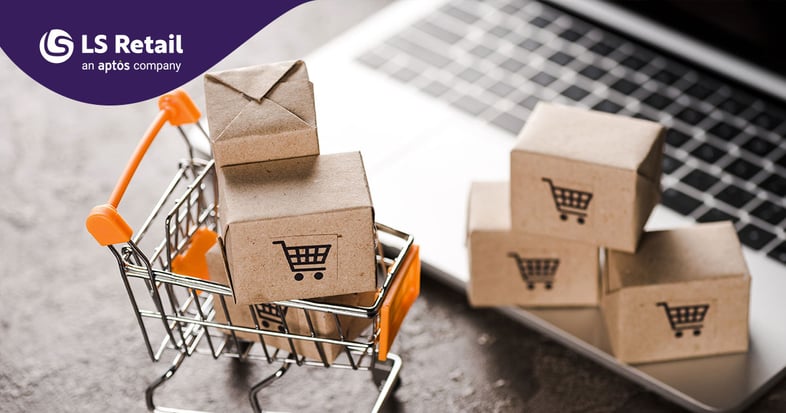From fast delivery to AI: What makes a successful grocery e-commerce strategy

Supermarkets are racing to meet consumer demands for fast, convenient, and flexible shopping experiences. According to a survey from the Feedback Group, nearly 79% of shoppers say they plan to maintain or even increase their grocery shopping online in the coming year. If your supermarket’s e-commerce strategy isn’t up to par, you’re leaving serious money — and loyal customers — on the table. The good news is that it’s not too late to update your online capabilities.
Here are six powerful strategies to build an online shopping platform that not only attracts shoppers but keeps them coming back.
1. Optimize your site for mobile shopping
Today, the majority of grocery e-commerce traffic comes from smartphones, making a fast, intuitive, and mobile-friendly experience essential. In fact, 30% of the digital population globally shop via mobile phones, which accounts for 1.65 billion mobile shoppers. And for grocery shopping, their expectations for simplicity and speed are no different than their other favorite social apps — it should be easy to use and add value to the shopping experience and offer more transparency. Results from 49 studies from the Baymard Institute have found that 70% of shoppers will abandon their cart, including for reasons such as complicated checkout processes and distrust with credit card information.
A smooth interface that anticipates the customer’s needs doesn’t just improve conversions; it makes the entire shopping experience more enjoyable. For example, Kroger has reported a 10% increase in their digital sales due to improvements from its mobile shopping app, which includes features like multiple payment options and loyalty integrations. By investing in clean design, fast load times, and personalized tools, supermarkets can create an online shopping experience that feels effortless, helping customers get what they need quickly.
2. Leverage AI to make suggestions
Ever had a shopping site read your mind? That’s the magic of AI — and it’s exactly what supermarkets need to keep customers engaged and increase basket size. According to research from Capgemini, around half of consumers are enthusiastic about the impact of Gen AI on their online shopping experiences, and three quarters are opening to Gen AI recommendations. By analyzing each shopper’s behavior, purchase history, and preferences, AI can suggest the right products at the right time whether it’s reminding someone to restock milk or recommending pasta to go with the sauce in their cart. This makes the shopping experience feel more personal, while also nudging customers to discover more of what they need (and want).
Many supermarkets have already introduced this technology into their e-commerce strategies. Carrefour, for instance, recently integrated a natural language chatbot to help customers with their daily shopping, enabling them to ask for help in choosing products based on their budget, food allergies, or recipe inspirations. Likewise, Albertsons offers an AI assistant to help customers select their preferred wine, tracking over 800 characteristics based on information from master sommeliers.
3. Work on providing fast delivery
Now more than ever shoppers are looking to get their groceries delivered to suit their busy lives. In regions like the U.S. and Europe, more than 50% of consumers use a mix of home delivery, curbside pickup, and click-and-collect to get their groceries. Some want it at their door in two hours, others prefer ordering ahead of time and grabbing it on the way home. For grocers, this means ensuring you provide enough e-commerce delivery options to satisfy a range of customer needs.
Just look at Walmart, which offers express delivery, scheduled drop-offs, and even pickup lockers, a strategy that helped them grow online grocery sales by over 70%. To offer better online shopping, grocers must give shoppers choices, make the process simple, and keep them informed with real-time tracking and updates. Third-party apps Instacart, DoorDash, or Uber Eats are also growing in popularity, especially among time-strapped consumers. y teaming up with these services, supermarkets can extend their reach, offer near-instant delivery, and meet rising customer expectations without having to build logistics from scratch.
4. Give customers stock transparency
Consumers today expect to know exactly what’s available before they even think about clicking "add to cart." This transparency is crucial for building trust and preventing the frustration that comes with ordering an item, only to later find out it’s out of stock. A recent survey reported by Supermarket News found that 76% of U.S. and U.K. shoppers want to be notified when an item is back in stock, and 56% of U.S. shoppers and 39% of U.K. shoppers want to know when an item is running low, with the majority saying they’d be more likely to buy the product if they were aware of its stock status.
Take Sainsbury’s, for example, which offers real-time stock updates on its online platform. When an item is out of stock, shoppers can opt for back-in-stock alerts or view alternative products with similar qualities. With clear product availability online, customers can feel more confident in their purchases, which will encourage them to buy online again and again.
5. Highlight sustainable and eco-friendly goods
Now more than ever consumers all over the world are prioritizing sustainable products for their home essentials. PwC reports that shoppers are willing to spend an average of 9.7% more on sustainably produced or sourced goods. A growing number of shoppers care about where their food comes from, how it’s produced, and whether it supports local communities. For supermarkets, making sustainability a visible part of the online shopping experience can not only attract eco-conscious customers but also foster long-term loyalty by showing shoppers they’re making a positive impact with each purchase.
Whole Foods Market sets a strong example by showcasing local producers prominently on its website and app. Shoppers can easily filter for organic, local, and sustainable products, making it simple to support environmentally friendly choices. Features like badges, detailed sourcing information, and product stories help customers feel good about what they’re buying. Supermarkets looking to build a more effective e-commerce platform should take note: highlighting eco-friendly options, adding sustainability filters, and telling the story behind products can help differentiate your brand and connect with values-driven consumers.
6. Tie the online and in-store experience
To build a successful e-commerce platform, it’s not enough to focus solely on the online store. You need to create a consistent, connected shopping experience everywhere your customers interact with your brand. Whether they’re browsing from their phone, making a quick in-store run, or doing a weekly stock-up online, today’s shoppers expect the same level of convenience, access, and personalization.
One way to do this is by utilizing digital tools that bridge the gap between online and in-store experiences. For example, many grocers now offer mobile features that let shoppers check real-time stock availability, view ingredients and allergen information, and get personalized deals — all from their phones, while they’re in the aisle. Tools like LS Retail’s ScanPayGo app take it even further. With ScanPayGo, shoppers can self-scan items, skip checkout lines, build and share shopping lists, track purchase history, and redeem loyalty points, all in one app. It’s the ultimate convenience, blending the best of online shopping with the immediacy of in-store visits. By offering this kind of connected experience, supermarkets can create a unified journey that attracts shoppers and keeps them engaged, no matter how they choose to shop.
Is your grocery e-commerce platform delivering the experience your customers expect? If not, we’re here to help you raise the bar and drive results. Contact our experts to discover how our software solutions for supermarkets can help you achieve your goals.

